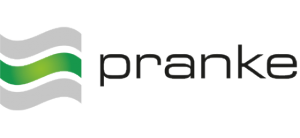| Cross Docking | Procedure in which goods pre-picked for a final destination in a distribution warehouse are only redistributed at package level. |
| CRP program | The Cyclic Replenishment Program is a procedure for the regular replenishment of articles. |
| EAN | The international (formerly European) article number is an internationally unique article identification. |
| EANCOM | A subset of EDIFACT, carried by EAN.UCC, specifically for retail and consumer goods. |
| EAN International | The umbrella organisation for the allocation of article and company identifications looks after various standards, including EANCOM. |
| EAN.UCC | The umbrella organization of EAN International and UCC. |
| EDI | Electronic Data Interchange is a generic term for the structured exchange of data between applications. |
| EDIFACT | Electronic Data Interchange For Administration, Commerce and Transport is an internationally standardized basic standard of EDI, supported by UN and ISO. |
| GLN | The Global Location Number is an internationally unique identification of a company and is assigned by the EAN.UCC. |
| GTIN | The Global Trade Item Number is the successor of the EAN and UPC. |
| Material EDI | The profile of the DTB for data exchange between producer and supplier. |
| NCTS | The New Computerized Transit System is a computerized transit system in Europe in connection with customs. |
| PLV | The passive contract processing. |
| SSCC | The Serial Shipping Container Code is an EAN package identifier. |
| Subset | A subrange of a standard, e.g. EANCOM from EDIFACT. |
| UPC | The Universal Product Code is an equivalent of the EAN in the USA. |
| VAN | The Value added network is a value-added service, i.e. networks with additional services to the pure connection. |
| WWS profile | EANCOM application profile for lifestyle retail |
| XML/EDI | Electronic Data Interchange using eXtensible Markup Language describes electronic data interchange using XML or approaches such as ebXML, Bizztalk, but not yet a standard. |
FAQs
If you have a gateway account and use x400 as the transmission path, you must send the messages to the x400 eGate address. This address is in principle always the same, you only have to enter the respective participant number of the trading partner on eGate in the surname (S). You can find this on our participant search at www.pranke.com or you can ask your trading partner for it.
The following is the structure of the currently valid X.400 address of an eGate participant when sending from the X.400 network of Deutsche Telekom:
|
For ‘Surname’, the TNr (= participant number) must be entered here. So for the eGate user 2800999999 the gateway address is therefore: C=de; A=viat-smtp; P=com; O=pranke; OU1=egate; S=2800999999
When sending outside the X.400 network of Deutsche Telekom:
|
Sorry, this entry is only available in Deutsch.
eGate ist ein internetbasierter Transportdienst für EDI-Nachrichten im B2B. Technisch gesehen ist eGate ein in sich geschlossenes System das auf der Basis eines Mailing-Dienst aufsetzt; das Versenden und Empfangen von Nachrichten erfolgt verschlüsselt über SMTPS/ POP3S. Über eGate können nur identifiziert Teilnehmer miteinander kommunizieren. Kommunikationspartner, die andere Kommunikationskanäle nutzen, sind über eGate ebenfalls erreichbar. Die Weboberfläche von eGate erreicht man über egate.pranke.com. Jeder eGate-Account wird durch eine Teilnehmernummer (TNR) identifiziert, die zugleich Teil der eGate-Adresse ist: [TNR]@egate.pranke.com.


